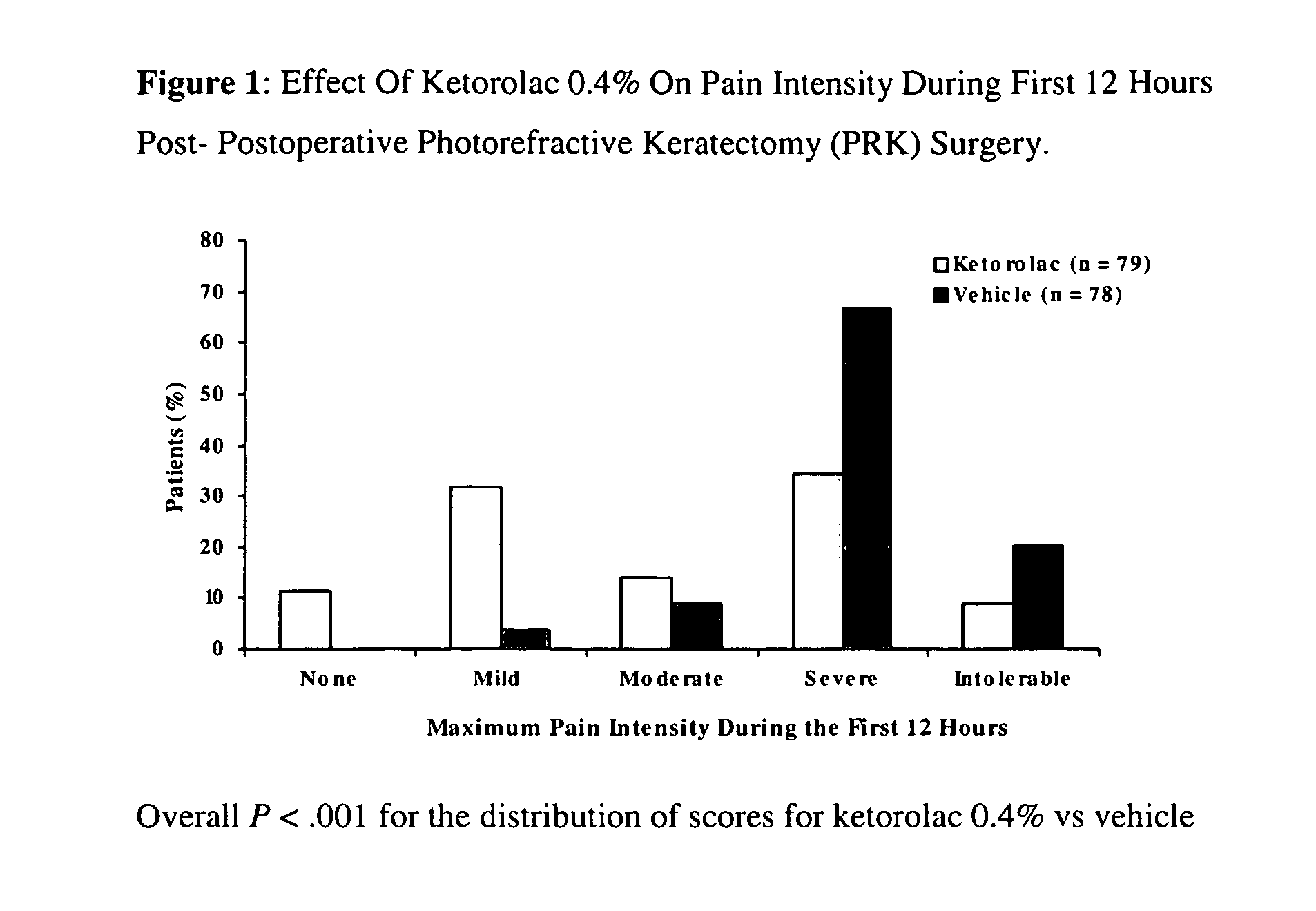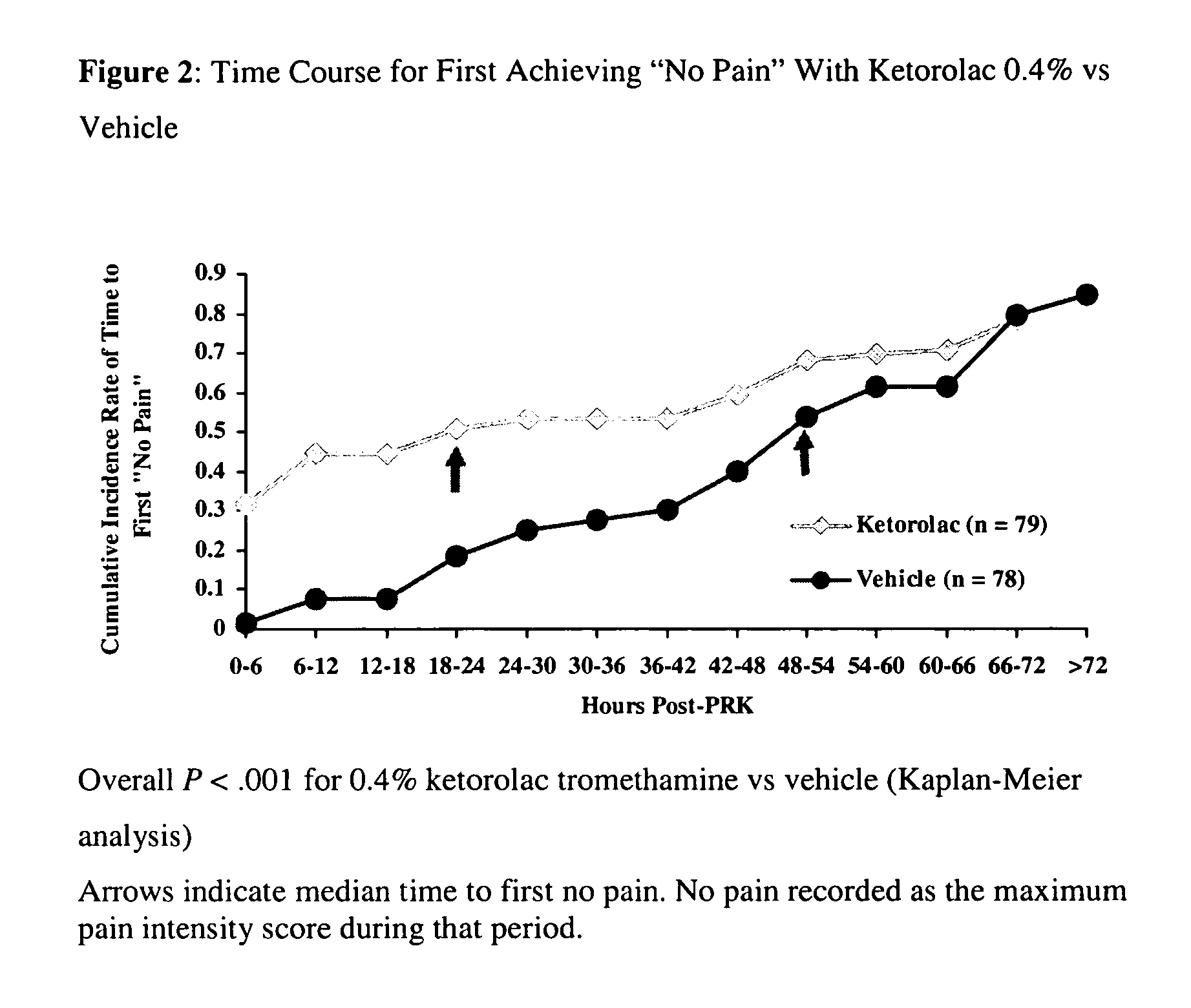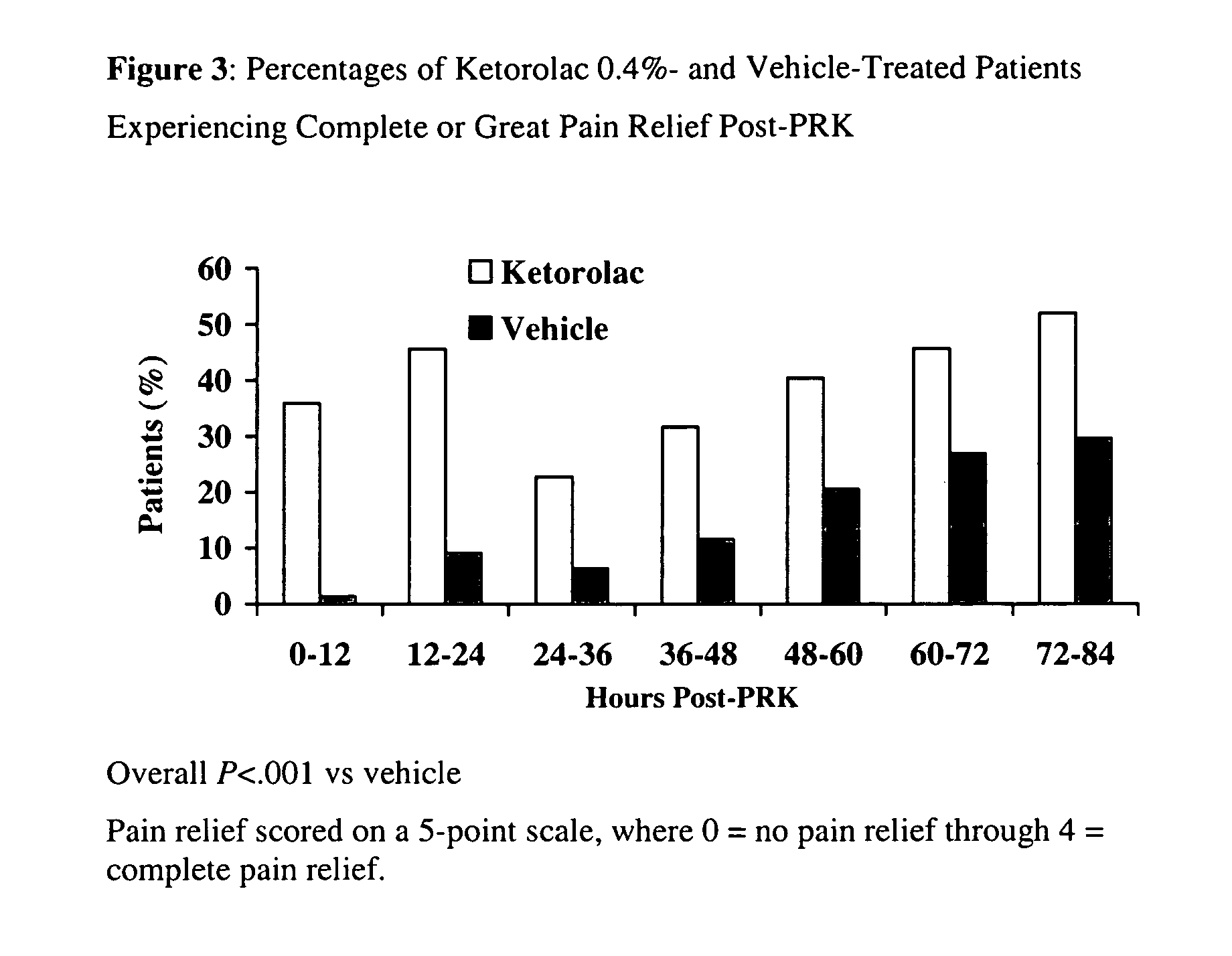Ketorolac tromethamine compositions for treating or preventing ocular pain
a technology of ketorolac and compositions, which is applied in the field of topical ophthalmic compositions comprising 3dihydro1hpyrrolizine1carboxylic, can solve the problems of ocular irritation, 5% ketorolac formulation, and associated adverse effects, so as to reduce the incidence of adverse events, maintain clinical efficacy, and enhance comfort
- Summary
- Abstract
- Description
- Claims
- Application Information
AI Technical Summary
Benefits of technology
Problems solved by technology
Method used
Image
Examples
example 1
[0026]Unless otherwise specified, all steps in this procedure were carried out at room temperature. The following procedure was followed in accordance with the amounts listed in Table 1 below. Purified water at 90% of batch size was charged into the main batch vessel. Mixing was initiated to produce a vortex sufficient to disperse and / or dissolve all product ingredients without excessive aeration or foam formation. The following components were added directly into the vortex in order, allowing each to dissolve before adding the next: sodium chloride, edetate disodium, octoxynol-40 (as a 70% stock solution) and benzalkonium chloride (as a 10% stock solution). The amount of benzalkonium chloride added took into account the assay of the stock solution used. The solution was mixed for no longer than 15 minutes. A specified amount of 1N sodium hydroxide, 1.85 mL per liter of final bulk product, was then added. The pH was checked and if needed was adjusted to 10.7-11.0 with 1N sodium hydr...
example 2
[0028]Table 2 contains the composition of an ophthalmic solution containing 0.5% ketorolac tromethamine which is clinically effective for treating ocular pain following photorefractive keratectomy surgery. The composition was prepared by the same procedure as Example 1. This composition was optimized to minimize the amounts of chelating agent, preservative, and surfactant required, since they are irritating to the eye. Comparison of the 0.5% solution of Table 2 to the 0.4% solution of Table 1 reveals that, surprisingly, the reduction of the amount of chelating agent, preservative, and surfactant required for the 0.4% ketorolac tromethamine is significantly greater than 20%, which corresponds to the reduction in the therapeutic agent.
[0029]
TABLE 20.5% Ketorolac Tromethamine Ophthalmic SolutionKetorolac Tromethamine0.5%Edetate Disodium0.10%NaCl0.79%Benzalkonium Chloride 0.010%Octoxynol-400.007%pH7.4
example 3
[0030]A multicenter, randomized, double-masked, vehicle-controlled, parallel-group study was carried out using the 0.4% ketorolac tromethamine formulation of Example 1. The study subjects consisted of 157 patients (78-79 / group) undergoing unilateral PRK surgery. The key inclusion criteria for the study were that each subject a) was a candidate for unilateral photorefractive keratectomy surgery (PRK) within 7 days after the initial visit, b) had best-corrected ETDRS visual acuity of 20 / 100 or better, and c) was capable of wearing a soft bandage contact lens. Key exclusion criteria were a history of refractive ocular surgery and sensitivity to study medication or its vehicle, Tylenol #3®, or Ocuflox®. The patient demographics are shown in Table 3. A total of 157 patients were enrolled with an age range of 20-66 years. There were no significant demographic differences between treatment groups.
[0031]
TABLE 3Patient Demographicsn%GenderFemale91 58 Male66 42 Age, mean ± SD39 ± 10RaceCaucas...
PUM
| Property | Measurement | Unit |
|---|---|---|
| median time | aaaaa | aaaaa |
| median time | aaaaa | aaaaa |
| pH | aaaaa | aaaaa |
Abstract
Description
Claims
Application Information
 Login to View More
Login to View More - R&D
- Intellectual Property
- Life Sciences
- Materials
- Tech Scout
- Unparalleled Data Quality
- Higher Quality Content
- 60% Fewer Hallucinations
Browse by: Latest US Patents, China's latest patents, Technical Efficacy Thesaurus, Application Domain, Technology Topic, Popular Technical Reports.
© 2025 PatSnap. All rights reserved.Legal|Privacy policy|Modern Slavery Act Transparency Statement|Sitemap|About US| Contact US: help@patsnap.com



